In the technological world of today, efficiency, precision, and innovation are the main driving forces of progress within and across various industries. One of the not-so-talked-about and yet very important components in the technological development is the solid-state frequency converter. These devices have become essential in current applications as they effectively connect different power systems and simultaneously enhance performance in sectors such as manufacturing, aviation, renewable energy, and the like. The solid-state frequency converters are responsible for the consistent power management that is involved with the various stages, from power output stabilization to the electrical frequency compatibility assurance. This article delves into the core functioning of these advanced systems, their critical role in modern industries, and how they will influence the future of power and performance. Prepare yourself for an exploration into the mechanisms, advantages, and practical uses that render the converters an important innovation.
Understanding of Frequency Converters
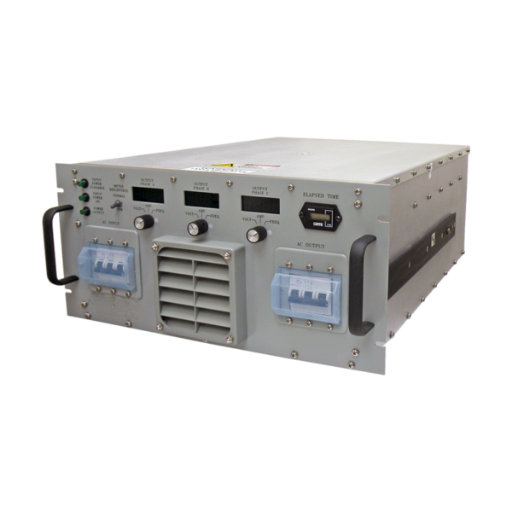
A frequency converter is a power supply device that adjusts the frequency of electrical energy to a level that a specific piece of equipment or system can tolerate. The procedure includes transforming incoming alternating current (AC) into power at another frequency, thus allowing for seamless operation of machines whose frequency is different from the standard supply. Frequency converters are commonly found in industrial, aviation, and marine applications where they are vital for compatibility and efficiency. The converters not only enable devices with different frequency requirements to operate at their best but also assist in energy management and provide operational flexibility.
What is a Solid-State Frequency Converter?
In a nutshell, a solid-state frequency converter is a highly sophisticated electronic device that accepts an AC power input at one frequency, converts it to a different frequency, and delivers it to the load, using only solid-state components like diodes, transistors, and integrated circuits. However, in contrast to rotary converters, solid-state converters have no movable parts and thus are more portable, reliable, and safe from wear and tear. The converters are designed adopting several power electronic technologies that control frequency with precision and generally high efficiency, such as insulated-gate bipolar transistors (IGBTs) and pulse-width modulation (PWM). They are the most common devices used in applications that need frequency conversion to be very stable and accurate, such as aerospace systems, production machines, and power policies of renewable energy plants. More so, due to the combined energy-saving feature of operational elasticity, solid-state frequency converters are at the center of modern power management and industrial automation.
Types of Frequency Converters
| Type | Key Features | Typical Applications | Advantages |
|---|---|---|---|
| Static Converters | Use solid-state electronics. | Aerospace, renewable energy systems. | High efficiency, compact design. |
| Rotary Converters | Utilize motor-generator combinations. | Manufacturing and heavy machinery. | High reliability under load. |
| Hybrid Converters | Combine static and rotary technologies. | Complex industrial environments. | Versatility, robust performance. |
| Variable Frequency | Adjust output frequency dynamically. | HVAC systems, conveyor belts. | Precise control, energy-saving. |
| Programmable Converters | Customizable for specific requirements. | Automation, customized machinery. | Flexible, tailored solutions. |
| Regenerative Converters | Recover and reuse energy. | Elevators, cranes, green energy systems. | Energy-efficient, cost-saving. |
Applications of Frequency Converters in Industry
HVAC Systems
In the case of heating, ventilation, and air conditioning (HVAC) systems, the frequency converters regulate motor speeds to make the energy applied as efficiently as possible; besides, the data indicates that it is possible to get a 30-40% reduction of the energy consumption in HVAC operations if variable frequency drives (VFDs) are used. In addition to that, the temperature and the amount of air flowing can be controlled by specifying different environmental requirements.
Conveyor Belts
In the industrial sector, frequency converters are used for conveyor belts that require instant speed changes, making the material handling process smooth and coordinated. With this technology, manufacturers can easily change their production rates because the line speed is adjustable without stopping the machinery, thereby improving productivity by increasing operational flexibility.
Automation and Robotics
Automated systems rely on programmable frequency converters for their ability to perform exact control of robotic arms and automate assembly lines. These settings help with accurate shifts and synchronization. Studies have recently shown a 20-25% increase in the production efficiency of systems supplied with frequency converters.
Elevators and Cranes
Through energy recovery during operation, regenerative frequency converters are used in elevators and cranes, such as during braking or descent, redirecting the energy for reuse. Such technology can be associated with both energy consumption and operational costs, as it significantly reduces them. The energy saved in elevators using regenerative drives is estimated to vary from 20% to 50%.
Pumps and Compressors
With the pumps and compressors now capable of running at variable speeds, there is less energy wastage, and the life of the equipment is prolonged. For instance, water treatment plants that have applied VFDs in pump operations not only enjoy energy savings of more than 35% but also benefit from reduced mechanical wear.
Green Energy Systems
The regenerative converters significantly support the proper functioning of green energy systems, such as wind turbines and solar power plants, by converting their energy flows into a manageable form quickly. This facilitates the smoother integration of renewable energy sources into the grid, resulting in less energy loss and more stable power supplies.
Power Ratings and Specifications
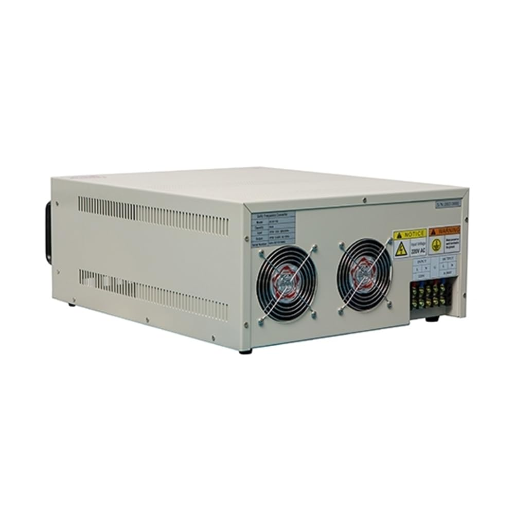
The evaluation of regenerative converters’ power ratings and specifications must always be focused on their essential parameters. Usually, the power ratings are from a few kilowatts (kW) for small applications up to several megawatts (MW) for large industrial and renewable energy installations. Another factor that one cannot ignore is voltage compatibility; various options are available for low, medium, and high voltage requirements according to the respective application. Regenerative converter efficiencies are typically above 95%, thus causing little or no energy loss during operation. Furthermore, these systems will always be at the top of the line and nothing else; therefore, consulting the manufacturer’s datasheets for precise specifications for your specific use is the only way to go.
KVA Ratings Explained
KVA (Kilovolt-Ampere) ratings serve as one of the principal measures in the capacity assessment of transformers, generators, and other electrical equipment. This rating is equivalent to the apparent power, which is simply the product of voltage and current, without taking into account the phase angle or power factor. The KVA formula for a single-phase system is simply Voltage × Current ÷ 1000, whereas for the three-phase system, it is √3 × Voltage × Current ÷ 1000.
Sometimes, modern equipment is classified by KVA ratings that are so detailed, allowing users to match specific power requirements easily. For example, applications in the industrial sector usually require transformers with higher KVA ratings, ranging from 500 KVA to several thousand KVA. In comparison, smaller commercial or residential applications will only need those in the range of 10 to 300 KVA. A proper understanding of these ratings will ensure that the system is sized correctly, thus avoiding problems of overloading or underutilization. Finally, it will be the system that reaps all the rewards in terms of performance and longevity.
Choosing the Right KVA for Your Application
When determining the best KVA rating for your needs, you should first check what equipment will be connected and estimate the system’s highest power demand. The best way to start this is by computing the total wattage or power consumption of the devices being used. Then, convert that value to KVA by taking into account the power factor of the system, predominantly around 0.8 in many instances. If the case is to do with industrial machinery, high-powered motors, or HVAC systems, always be ready for the starts that those motors take to start (commonly known as starting surges), which in some cases make it necessary for the capacity to be more than just that required by the nominal load. In addition, reflect on scaling up or scaling down, ambient conditions, and customer-specific legal enforcement regulations in your industry. Sizing the transformer correctly and installing it properly prevents inefficiencies, reduces the risk of equipment breakdown, and ensures a steady power supply, keeping the electricity on 24/7/365.
Impact of Power Ratings on Performance
Power transformer rating has a direct influence on transformer efficiency and reliability. The small transformers often overheat, leading to early aging and unplanned, costly shutdowns, while the large ones may not operate at full capacity, resulting in increased operational costs. Evidence from the industry indicates that transformers operating at their rated load maintain very close to the stated quality, achieving losses of less than 1% for most designs considered high quality. On the other hand, conditions like ambient temperature, harmonic loads, and altitude also play a significant role in determining performance, and they must be included in the assessment. A good trade-off among these factors leads to enhanced functionality, minimizes energy waste, and maintains the longevity of the system.
Frequency Conversion Processes
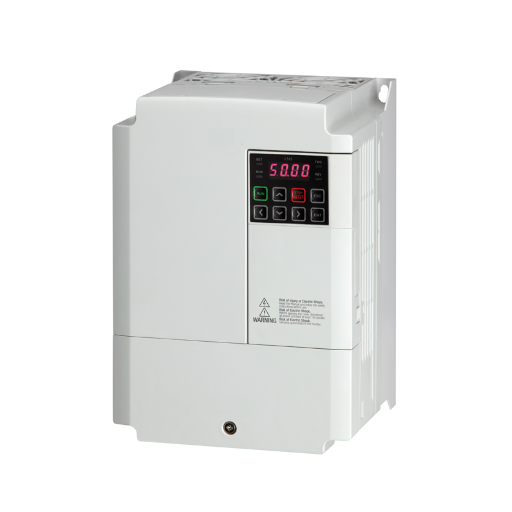
The process of changing frequency involves adjusting the electrical signal so that it corresponds with the needs of a specific application or device. This is done mainly through the use of frequency converters, which change the input frequency to the required output frequency while maintaining stable voltage levels. Such processes are crucial in industries where machines, energy from renewable sources, and power systems with different frequency standards are used. The provision of appropriate frequency conversion not only raises the efficiency but also saves the equipment and allows the integration of various electrical systems.
Static vs. Dynamic Frequency Conversion
| Parameter | Static Frequency Conversion | Dynamic Frequency Conversion |
|---|---|---|
| Technology Used | Solid-state electronics | Rotating machinery |
| Maintenance Requirement | Low | High |
| Efficiency | High | Moderate |
| Size and Weight | Compact | Bulky |
| Noise Level | Quiet | Noisy |
| Durability | High | Moderate |
| Initial Cost | High | Moderate |
| Applications | Precise electronics, renewable energy | Industrial systems, legacy equipment |
| Power Range | Limited | Wide |
| Response Time | Fast | Slower |
Converting 60Hz to 50Hz
Switching from 60Hz to 50Hz involves changing the electric current frequency limits, which can be done by various methods depending on the situation. One of the most widely used methods is to use a frequency converter. This machine takes the input frequency and, by using advanced solid-state technology, produces the desired output frequency. Converters like these are very accurate and efficient, and they also help maintain steady performance in systems where frequency changes are significant.
Switching to another solution, we can see the use of motor-generator sets, where the motor, powered by the 60Hz supply, rotates the generator that produces 50Hz. Although this method can support larger power needs, it usually involves more maintenance, resulting in higher costs, more noise, and a bigger footprint compared to modern electronic solutions. Each option has its own pros and cons; it is essential to weigh factors like power range, efficiency, price, and compatibility with the system before deciding which method to use for frequency conversion.
Three-Phase vs. Single-Phase Frequency Converters
| Parameter | Three-Phase Converter | Single-Phase Converter |
|---|---|---|
| Input Power | Requires three-phase input power | Operates on single-phase input power |
| Load Capacity | Suitable for high-power loads | Suitable for low-to-medium power loads |
| Efficiency | Higher efficiency, less energy loss | Lower efficiency compared to three-phase |
| Output Stability | More stable output voltage and frequency | Less stable, higher fluctuations |
| Applications | Industrial machinery, heavy equipment | Household appliances, small tools |
| Cost | Higher initial setup cost | Lower initial cost |
| Size and Weight | Larger and heavier units | Compact and lighter design |
| Maintenance Needs | Requires more frequent maintenance | Minimal maintenance required |
| Common Uses | Factories, large motors, data centers | Residential, small-scale devices |
| Scalability | Easily scalable for large systems | Limited scalability for high demands |
Technical Considerations for Solid-State Frequency Converters
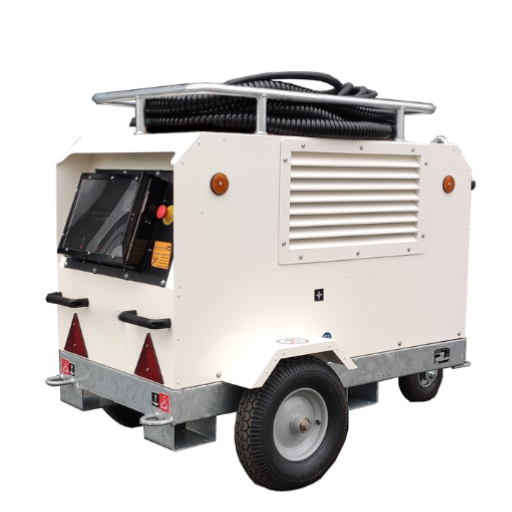
- Input Voltage Compatibility:
The input voltage range must be considered to ensure the converter does not cause performance issues or damage. - Output Frequency Range:
Inspect the output frequency of the converter to see if it meets the particular needs of the equipment. - Power Rating:
The output power of the selected converter must be less than or equal to the power needed by the connected devices to keep the system operating steadily. - Efficiency:
Achieving high efficiency is essential for saving energy and reducing operational costs in the long run. - Thermal Management:
Solid-state converters produce waste heat while running, and so proper cooling is necessary not only to monitor overheating but also to ensure long-term adequate operation. - Environmental Considerations:
Check if the converter can withstand the environmental conditions where it is going to be located, such as the temperature, humidity, and level of dust.
Efficiency and Thermal Management
The efficiency of the devices and the thermal control are the main factors that affect the functioning of solid-state converters, and these factors are interrelated. The power electronics innovations of today, which are why we are seeing everyone working on more energy-efficient designs, have resulted in significantly higher efficiency ratings in converters. Most of them now have efficiency percentages above the 95% mark. Efficiency not only means less power loss but also less heat generated, which requires less cooling and, hence, a more stable operation.
The effectiveness of thermal management is as important as the heating components, which need to be protected and maintain reliable performance over an extended period. Commonly, heat dissipation techniques such as heat sinks, liquid cooling systems, and advanced thermal interface materials are used to dissipate heat effectively. Furthermore, designing for the best air circulation and employing temperature monitoring sensors can contribute to more effective heat regulation. On the other hand, both advanced efficiency and thermal management would ultimately succeed by reducing the use and maintenance requirements of solid-state converters.
Common Technical Issues and Troubleshooting
Although solid-state converters are considered very reliable, they can have multiple technical problems that demand solutions. One of the most common problems is overheating, mainly caused by inadequate cooling or poor placement of the thermal management systems. Conducting regular checks and maintaining the cooling installation components, such as fans or heat sinks, can diminish this trouble.
Another frequent problem is voltage inconsistency, which can be due to sudden high voltage or various irregularities in the input power supply. To resolve this, one should ensure that proper surge protection is in place and that quality inputs, such as a stable power source, are used. Further, components like capacitors or diodes can be the source of the problem, causing device malfunction, deterioration, or even destruction. The defective parts can be identified and replaced with the help of multimeters or special testing tools, provided that the system has undergone routine diagnostics.
Moreover, signal interference is another problem that occurs due to converters and is most likely to happen in places where the electromagnetic interference (EMI) is high. But the merger of the best recommendations for grounding, wiring, and hiding the components reduced the disturbances. The general performance and lifespan of solid-state converters can be significantly extended by adopting a proactive approach to addressing the mentioned problems and employing other robust troubleshooting techniques.
Recent Trends and Innovations in Frequency Conversion
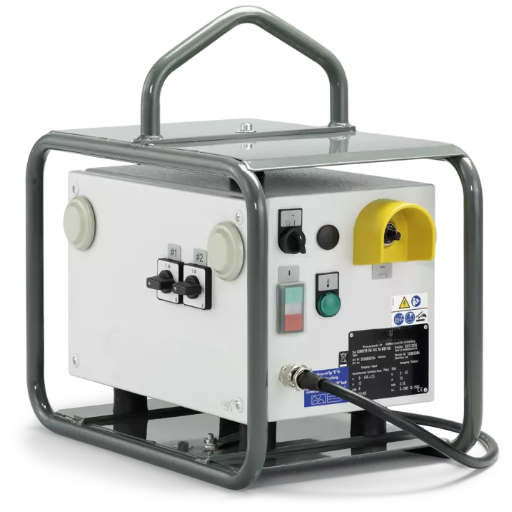
Advances in frequency conversion technology continue, driven by the demand for higher efficiency, reliability, and flexibility. One of the key trends is the arrival of high-speed solid-state inverters, which provide greater control and energy savings in industrial and renewable energy applications. The transformation of frequency converters —through the application of AI —into intelligent and self-regulating devices has enabled the introduction of predictive maintenance and real-time quality control of a machine’s performance. Renewable energy plants, especially solar and wind, are now more closely related to dynamic frequency converters, which can efficiently handle the power output variation that comes with these energy sources. The switch from conventional silicon to silicon carbide (SiC) and gallium nitride (GaN) has led to a significant decrease in power consumption and a much higher degree of heat tolerance, making the converters smaller and more efficient. All the inventions are meant to decrease the cost of energy and set a path for the future of power conversion technologies.
Advancements in Solid-State Technology
The solid-state field is constantly changing and improving how technological advances are seen and applied in different industry sectors. One such development is the rise of wide bandgap semiconductors, such as silicon carbide (SiC) and gallium nitride (GaN), which outperform existing systems in power efficiency, thermal conductivity, and reliability. The application of these new materials to high-power and high-frequency devices, such as electric vehicle chargers, renewable energy systems, and telecommunications infrastructure, has become the primary sector in the overall power device market.
Moreover, considerable research effort is directed towards solid-state batteries, which have become a hot and trendy topic in energy storage, primarily due to their high energy density, safety, and long life. Quite different from traditional batteries, these new batteries with solid-state electrolytes have the potential to revolutionize energy storage for consumer electronics, electric drivetrains, and the forthcoming IoT systems that power cities, homes, factories, and grids. Furthermore, some strategies for achieving long-term sustainability in this disruptive sector include using battery packs to address human-induced climate change, ensuring energy security for industrialized countries, and reducing pollution from the transportation sector.
Future of 400Hz Applications
Aviation and Aerospace
The 400Hz power systems are still the most common in aviation due to their ability to decrease system weight and size, which are essential for the proper operation of aircraft. In fact, modern airplanes rely on 400Hz power for the safety systems onboard, such as avionics, lighting, and communication devices. This frequency ensures a stable and consistent power supply even at high altitudes and under severe weather conditions.
Military Applications
The army has power applications in portable units, communications, and warships that are entirely dependent on the 400Hz supply. Because of their small size, these applications are especially well-suited for use in command units that need to be mobile and radar systems. The goal of upcoming projects is to toughen the system for battle use.
Space Exploration
Powering up space vehicles and satellites requires portable and efficient power systems. By enabling life support, data communication hardware, and navigation equipment, 400Hz technology plays a key role in ensuring their successful operation. There is a continuous effort in the research to find solutions that would both enhance and create energy-efficient and reliable 400Hz power systems for space scenarios, thus enabling their long-term operability.
Industrial Equipment Automation
The use of 400Hz power supplies in automated manufacturing equipment and robotic systems is not fixed; instead, it is on an increasing trend. The high-frequency systems in place significantly enhance the precision of the welding, cutting, and diagnostic machinery sectors by increasing efficiency and speed. This, in turn, provides an opportunity for high-tech industries that require precision and speed in their operations to grow faster and more effectively.
Telecommunication
The telecommunication industry enjoys the benefits of the 400Hz systems integration in the data centers and server racks. The higher frequency allows much more efficient power distribution for both compact and high-performance equipment. The following developments are expected in this area, leading to a significant decrease in energy consumption for data centers as they become greener.
Medical Equipment
Medical equipment is using 400Hz technology to get compact, lightweight power solutions from MRI scanners to portable diagnostic tools. It is a beneficial step moving forward for mobile healthcare and emergency response equipment, where portability and reliability are the major components.
Intelligent Frequency Converters in Industrial Automation
Industrial automation is revolutionized through the use of intelligent frequency converters, giving better energy efficiency and system performance. Because of these, exact control of motor speed and torque is possible, resulting in less energy use and reduced equipment wear. The latest and, thus, the most highly developed frequency converters have features such as instant monitoring, predictive maintenance, and the ability to connect with IoT systems. So, the whole upstream/downstream chain of an industry has benefited from such a move – the entire industrial process may now be run 100% automatically. Besides, let’s come closer to the customer and consider the same thing in the car lights sector. We will see that accidents have been reduced drastically because the cars stopped by themselves before a crash happened, while in the central communication system, intelligent converters go hand in hand with their counterparts for the best overall integration and communication among different system components in industrial applications; hence, moving towards more innovative and more sustainable automation technologies.
Reference Sources
Adaptive control system of the frequency converter on the basis of resonant inverter with nonlinear control
Summary: This study explores an adaptive control system for frequency converters using a resonant inverter with nonlinear control. The methodology involves designing a control algorithm that adapts to varying load conditions, improving efficiency and stability.
New energy ship power system
Summary: This paper discusses the integration of frequency converter technology in new energy ship power systems. It addresses technical challenges such as energy storage, DC networking, and shaft motor frequency conversion.
Frequently Asked Questions (FAQs)
What is a solid-state frequency converter, and how does it work?
An electronic device of a solid-state frequency converter type is a converter of electrical power from one frequency to another, typically from 60Hz to 50Hz or vice versa. State-of-the-art technology is used in this kind of converter to reach high efficiency and reliability. It is widely utilized in numerous power systems, including shore power applications for ships and aircraft ground power systems. The converter can also be built to cater to different kVA ratings, like 5kVA or 20kVA, depending on the needs. The use of these solid-state components in the converters has made them more compact and lighter compared to the bulky motor generator sets.
What are the advantages of using a three-phase frequency converter?
Three-phase frequency converters have many benefits over single-phase systems, with the most significant advantages in industrial and heavy-duty applications. They can bring more power, which can match not only a larger load but also the most severe power systems. Another good point is the energy delivered and efficiency; their calculations are perfect! Moreover, the system boasts many promising features that do not sacrifice the power delivered, and the prototype of the power systems is also distinct. Through one of these results, the production of the converters is often in the form of units to be used in the aviation and military sectors, which are the two sectors where the demand for the power supply is the most concentrated and unstable. Furthermore, these converters are considered ideal for the parts of the system attributed to other types of loads. They will have many indifferent loads available, which is the main reason the machines are used in the department of engineering.
How does a solid-state converter maintain output frequency?
The output frequency of a solid-state converter can be stabilized thanks to modern electronic control systems. Feedback circuits and intelligent algorithms that come with the converters enable them to operate with a steady output frequency, whether it is 60 Hz, 400 Hz, or any other frequency needed. The above-described feature is essential for sectors like aviation and the military, which often require a highly reliable frequency-control system. Furthermore, solid-state technology reduces maintenance to almost zero when compared to the old motor-generator systems, thus offering a very robust solution for many power applications.
Can a frequency converter change 60Hz to 50Hz?
Indeed, a frequency converter can be a good solution for the translation between 60Hz and 50Hz. This allows different power standards-equipped gear to coexist flawlessly. It is instrumental in the global operation setup, where the equipment might have to be adapted for other places. The conversion process mainly relies on a static frequency converter, which not only accurately adjusts the frequency but also maintains a stable voltage. These devices are indispensable for the smooth functioning of electrical power systems under any local Hz power standard. The business sector can save money by not investing in new equipment, while ensuring that installations are compatible with all power systems.
